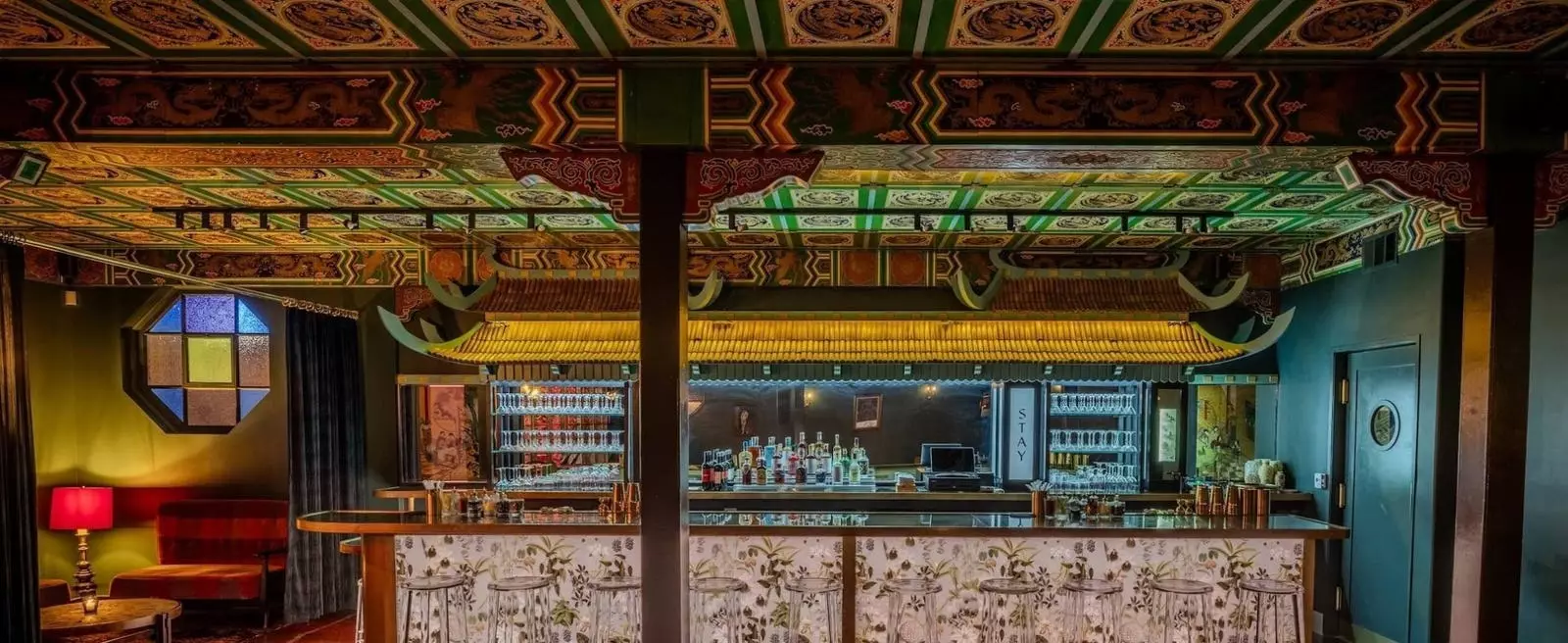The intersection of culture, health, and social habits is increasingly giving rise to unique dining and drinking experiences. The recent announcement of the closure of STAY. “Zero-Proof” Bar in Los Angeles is a poignant reminder of the challenges faced in this evolving market. Opened just eight months ago in Chinatown, STAY. was celebrated as the city’s first non-alcoholic cocktail lounge, a bold venture that sought to cater to the growing sober-curious demographic. However, the story behind its short-lived endeavor offers deeper insights into the complexities of alcohol-free establishments and the broader cultural trends surrounding them.
The sober-curious movement is characterized by individuals seeking to explore a lifestyle that eschews alcohol, favoring health and well-being over tradition. This burgeoning trend has seen success in various sectors, with a notable rise in the availability of non-alcoholic (NA) beverages, from craft beers to sophisticated spirits. However, STAY.’s closure serves as a cautionary tale. Despite growing popularity, the lingering question remains: is there enough consumer demand to sustain dedicated NA establishments?
Summer Phoenix and Stacey Mann, the owners of STAY., acknowledged in their farewell statement how deeply they valued the community fostered there. Their commitment to creating an upscale, inviting atmosphere was evident; designed to draw patrons in not only for the drinks but for the experience of lounging and connecting in a chic environment. Nonetheless, the fundamental challenge persists: translating consumer interest into actual foot traffic. This complex dynamic highlights a gap — while customers may be sober-curious, it may not always translate into regular visits to specialized venues.
As observed in cities like Austin and New York, where other non-alcoholic establishments continue to thrive, the distinction lies in their business models. Chris Marshall of Sans Bar emphasizes the importance of diversification, relying not solely on beverage sales but also on additional revenue streams such as consulting services and space rentals. This strategic approach highlights a pragmatic response to the market’s challenges. For STAY., the lack of a similar multifaceted revenue model may have contributed to its struggles.
Moreover, Marshall’s insights into the necessity of building a community around sobriety point to a deeper marketing challenge. Unlike the traditional bar scene, which naturally draws clientele through social norms, non-alcoholic bars have to work harder to create an identity and encourage patronage. Building a community that sees itself reflected in the brand requires time, effort, and often, patience—a luxury that ventures like STAY. perhaps did not have.
The significance of STAY.’s brief existence goes beyond its high-profile location and design. It reflects a cultural shift towards more inclusive spaces that cater to a broader range of lifestyle choices, albeit with practical limitations. The notion of non-alcoholic bars evolving into a recognizable chain appears optimistic; however, industry experts suggest that the infrastructure for such a shift may need more time to develop. For now, brick-and-mortar NA establishments may need to focus on niche markets and community-building efforts.
Additionally, Marshall’s prediction that we’re several years away from establishing chains of non-alcoholic bars suggests that the trend, while promising, requires careful cultivation. As traditional drinking establishments adapt and incorporate NA options and offerings, the likelihood of acceptance and visibility for non-alcoholic venues may grow.
The closure of STAY. serves as a reminder of the need for non-alcoholic bars to leverage creative business strategies that engage their target audience effectively. Whether through community education, collaborations, or innovative service offerings, there are lessons for current and future entrepreneurs aiming to capture the sober-curious market. The essence of building a successful NA venue may well hinge on fostering connections and providing unique experiences that resonate with modern-day social interactions.
While STAY.’s journey has come to an end, the conversation surrounding alcohol-free lifestyles and venues is far from over. There lies potential and promise for a future where such establishments can thrive, but only with careful consideration of market demands and cultural shifts in how we socialize.

